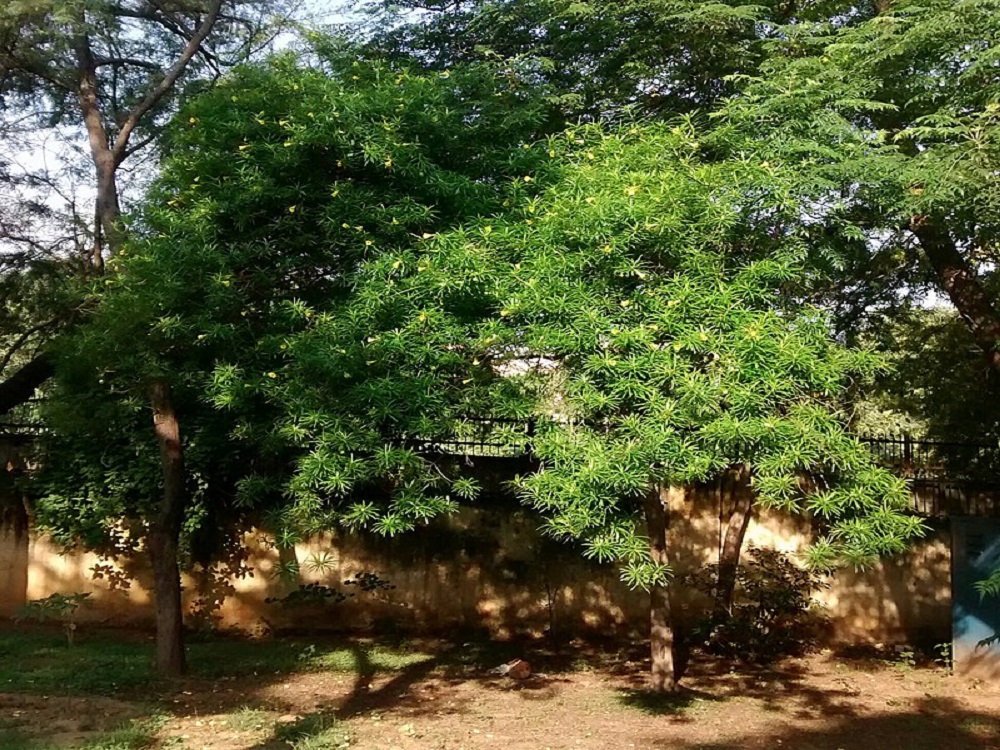Kulkephul - Yellow Oleander Tree

Cascabela thevetia
Summary
Scientific Classification
Kingdom: Plantae
Division: Magnoliophyta
Class: Magnoliopsida
Order: Gentianales
Family: Apocynaceae
Genus: Cascabela
Species: C.thevetia
Scientific Name: Cascabela thevetia L.
Common Names:
English: Yellow Oleander, Mexican Oleander, Lucky Nut.
Hindi: Peeli Kaner Zard Kunel, Kulkephul.
Kannada: Kadukasi, Haladi Kanagalu.
Marathi: Bitti.
Description:
Habit and Habitat: Cascabela thevetia is a thornless, small-sized and evergreen tree growing up to 6-8 m high.Evergreen, lowland or riparian forests at elevations from 50 - 200 metres.
Distribution: Cascabela thevetia is native to tropical America. The plant is cultivated as an ornamental tree and naturalized throughout the tropics.
Morphology:
Leaf: Numerous, alternate, close together, linear, acute.
Inflorescence: Axillary or terminal cymes.
Flower: Flowers bisexual, regular, 5-merous, faintly fragrant, Calyx composed of 5 triangular sepals. They are 1 cm long and 0.4 mm wide. The calyx is light green-coloured and glabrous.The corolla is composed of 5 yellow-coloured petals (sometimes white or pink-coloured). The petals are connate at the base into a 2.5 cm long tube. The corolla-lobes are obovate and overlapping, 4 cm long and 3.5 cm wide.
Androecium: composed of 5 included stamens at the throat of the tube.
Gynoecium: Carpels 2, connate, superior, style filiform, stigma big, capitate.
Fruit: fruit is a globose drupe. The fruit is about 3-4 cm across with a 3-4 cm long peduncle. It is green-coloured turning dark brown blackish-coloured when fully ripe. Each drupe contains one stone.
Seed: The seeds are enclosed into a sub ellipsoid stone. The stone is brown-coloured with a longitudinal and a transversal furrow. Each stone contains 2 seeds. The seeds are whitish-coloured and subglobose.
Fruting & Flowering Season: Throughout the year.
Propagation: Thevetia peruviana can be propagated by seed or cuttings.
Importance:
All parts of Cascabela thevetia are poisonous, extremely toxic. Thevetia peruviana is widely grown as a garden ornamental. Commonly planted near the temples, the flowers being offered to God Shiva.
Location: Botanical Garden.
 Trees of GSS Project supported by Makerspace Belgaum Website concept and designe by
Trees of GSS Project supported by Makerspace Belgaum Website concept and designe by